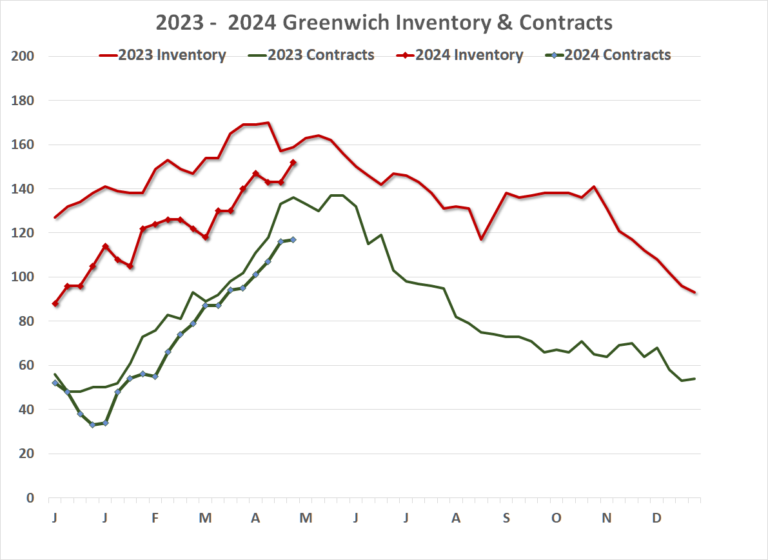Spring is an important time to prepare lawns and gardens for the entire coming year. What can we do? Here is a guide.

By John Kriz
Spring into Action: Preparing Your Lawn and Garden
Spring is an important time to prepare our lawns and gardens for the coming year, and to deal with winter’s effects. It’s also an opportunity to make improvements. For new homeowners, property care can be especially daunting. What we do on our property not only affects that plot of land, but also the wellbeing of the broader environment – including us. Need some tips? Read on.
Soil Testing: The First Step to a Healthier Garden
Start with a Soil Test: This is one of the wisest things you can do. You don’t know what your soil needs, or is capable of, until you know what shape it’s in. How to do this? Go to: https://portal.ct.gov/CAES/Soil-Office/Soil-Office/Soil-Testing-Offices-Instructions This is the State’s agricultural lab and they perform free soil testing. Your tax dollars at work! Once you have specified what you plan to do in the area where each soil sample was taken (lawn, vegetable garden, fruit trees, foundation bushes, flower bed, etc.) the soil lab’s results will specify the state of your soil, with recommendations on appropriate soil amendments, such as fertilizer, lime and organic matter.
Property Walkthrough: Assessing Winter Damage and More
Walk the Property: There’s an old saying in the countryside that the best fertilizer is the footprint of the farmer. Check for damage to bushes or trees, and whether pruning is needed. See if any plants are in distress. Some might not have made it through the winter and must be replaced, and some might be sick. Also, for garden beds, see if you need to add mulch, which is usually wood chips or shredded leaves. Mulch helps the soil retain moisture and keeps weeds down. If you have wetlands on your property, there are specific rules on what you can and cannot do there and in the adjacent upland review area. You’re best advised to seek direction from the inland wetlands office in Town Hall. And if you’re a new homeowner, wait and see what comes up as Spring progresses before you make big landscaping decisions. Then you’ll know what you like and want to keep, and what you want to change.
Fertilizing Fundamentals: Timing and Techniques
Fertilizer: You probably don’t need it for the lawn. Autumn is the best time to do that. (Check those soil test results!) But, the best time to fertilize those bushes and trees is late April or early May. Spring is when they’re pushing out new growth, and setting seeds and blossoms. All that takes energy, and fertilizer helps. For bushes and very small trees, take a handful of the proper organic fertilizer (that soil test helps here) and spread it in a circle around the drip line, which is the outer edge of the branches, not at the base. For larger trees, an arborist can perform deep feeding if needed, or you can buy tree spikes made of fertilizer and pound them in the ground with a small sledge. It works. Be sure not to apply too much nitrogen fertilizer, which generates lots of green growth, but fewer f lowers, seeds and fruit. This particularly applies to flowers and vegetables planted in tubs and baskets, where there’s a tendency to think ‘More is better.’ It isn’t. Don’t fertilize newly planted trees. Give the tender roots time to establish themselves. But do keep those trees and bushes watered, and be sure to add some organic mulch in the hole as very slow release fertilizer.
N-P-K Basics: Understanding Fertilizer Components
N-P-K: Let us harken back to high school chemistry. N=Nitrogen, P=Phosphorus and K=Potassium. On every bag of fertilizer you will find three numbers, in this order. They indicate the relative mix and concentration of these important fertilizer components. Thus a 10-2-5 number means 10% of the contents are nitrogen, 2% phosphorus and 5% potassium. As well, a 50-pound bag with a 2-0-2 analysis has less ‘stuff’ than a 25 pound bag with a 5-1-4 analysis. Do not pay for weight. Many fertilizer mixes also contain important micronutrients such as iron, copper and boron. What mix to use? Check that soil test, or do an internet search for the needs of your particular plant – there are differences. In general nitrogen boosts vigorous, leafy growth, phosphorus supports root development, fruit and seeds, and potassium supports overall growth and keeps the plant balanced. Again, use the right amount of the right mix of fertilizer, and be careful of fertilizer run-off. As examples, nitrogen runoff into waterways breaks down into nitrous oxide, a greenhouse gas that’s far worse than carbon dioxide; phosphorus run-off causes algae blooms and oxygen ‘dead zones.’ Most generic lawn and garden fertilizers contain no, or very little, phosphorus because of this problem.
Spring Seeding: Tips for Patchy Lawns
Seeding – Spring is not the best time to do this; Autumn is. But, if there’s a bare patch you just have to fix, go ahead. Score the soil to help it accept the seeds, choose the right seeds (sun or shade mix), keep it watered, and consider spreading a bit of hay on top to help retain moisture.
Pesticide Use: A Cautious Approach
Pesticides and Herbicides: I am not a fan of these, and only use them in extremis. And the specific nature of the challenge – this weed, that weed, this bug, that bug – will affect the right solution. It’s complex. I suggest learning to live with some weeds. Clover and a few dandelions in the lawn provide food for many pollinators and other animals. First try digging the weeds out. Do Not Use Roundup.
Embrace Native Plants: Enhancing Local Biodiversity
Use Native Plants: Not only are native plants important to the survival of native animals, which rely on them for food, shelter or breeding, but they’re lovely (think mountain laurel, Eastern dogwood, cardinal flower, bloodroot and holly trees) and are used to our soils and weather. Consult https:// ctnofa.org/programs/the-ecotype-project/ for ideas, or a good landscape architect or plant nursery. Invasive plants have become a huge problem – burning bush and Japanese barberry are some of the most common ones – and they are squeezing out native plants. Also, Japanese barberry bushes are often host to mice, which can carry Lyme ticks – not good. So, consider removing invasives and replacing them with natives. (A good list of local invasive plants is: https://cipwg.uconn.edu/invasive_plant_list/ Also try: https://www.invasiveplantatlas.org) You’ll be doing yourself, and the planet, a big favor.
Mowing Strategies: Let the Grass Grow
Let that Grass Grow. Do not cut the grass too short. Your lawn is not a golf green. Have the mower set at 2” and consider cutting the grass every other week. You’ll save time, money and the planet. Taller grass retains moisture better, and shades out weeds and thus impairs their capacity to grow. And leave the cut grass in the lawn.
Communicate with Your Landscaper: Ensuring Your Vision Talk to Your Landscaper. Many people in New Canaan use a landscaper.
Talk with them and let them know what you want done, and how. You’re the boss. If not, you could find that all sorts of things are being done that you do not want, or are not needed. And you’ll end up paying for it all.
Eco-Friendly Equipment: Consider Going Electric
Consider Electric: Electric mowers and leaf blowers are getting better. Consider getting some if you’re the DIY type, or ask your landscaper. Or just get a rake and broom and do it yourself – carbon-free!
Consult an Arborist: Expert Care for Your Trees
Consider an Arborist: They really understand trees and plants, and will likely notice things you miss. Treatment of Eastern Hemlocks for wooly adelgids, which are invasive bugs from Asia that can do great harm to these trees, is one thing they can do, as well as aerial pruning, deep feeding and focused disease treatment. Plus, if you have many big trees on your property, and especially near the house, the time might come when a storm knocks one down and blocks your driveway, or ends up leaning against the house. If you have established a relationship with an arborist, you might get a faster response. Just saying.
John J. Kriz is a 30+ year resident of New Canaan. The opinions expressed are his own.




